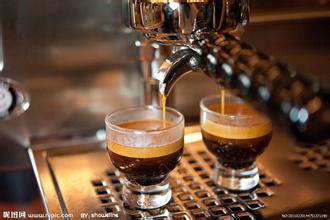Introduction to the characteristics of the Fine Coffee Flavor Manor in Kenya the Central Dashan area of Nyeri
Kenya has two coffee cherry production seasons a year. The main season is from October to December and the secondary season is from April to June.
As a loyal fan of Kenyan coffee, we sugar bean boutique coffee certainly will not miss this delicious coffee.
At the end of August, we arrived a new batch of new Kenyan beans in this season, from the Kenyan Gatuya washing station.
The water washing station was established in 1962 and currently works with about 1220 coffee farmers. In cooperation with the New Musrajendi Water washing Station, they set up a new Katuya cooperative. At present, there are more than 2500 registered members. The output of 36 registered cooperatives accounts for 65% of the total output of Murangjia county. Small farmers pick the ripe coffee fruit and treat it in several treatments in the treatment plant: peeling, overnight fermentation, washing and natural drying on a high drying bed.
Kenya AA Top Gatuya Washed
Kenya AA Top Katuya washing
Flavor: grape, green pear, citrus
Baker: Xiao Fujiang
Baking degree: shallow baking
Packing mode: one-way exhaust valve
Packing unit: 227g
Cooking suggestions: hand flushing, siphon kettle, flannel
Coffee beans and producing areas:
Country of origin: Kenya Kenya
Processing plant: Katuya Gatuya
Altitude: 1700-1800 m
Bean seed: SL28 & SL34
Treatment method: washing treatment method
Grade: Kenya AA Top
The fascinating flavor of Kenyan coffee is also related to its unique multiple fermentation. The biggest difference between Kenyan water washing (the famous K72 model) and Central and South America is multiple fermentation. After the ripe coffee and cherries are washed, peeled, dry fermented for 24 hours, washed, dry fermented again for 24 hours, washed, and dry fermented again for 24 hours, the cycle treatment reaches 72 hours of fermentation time, after washing, soak in the sink for one night, and start drying in the sun factory the next morning. Kenyan coffee varieties are mainly SL28, SL34, K7 and Ruirull. Kenya has a national leaf rust problem. SL28 is suitable for growing in middle and high altitude areas where leaf rust is not serious and can produce 1.8t raw beans per hectare. SL34 has good moisture resistance and is suitable for growing in rainy and humid areas at middle and high elevations. K7 is a variety of Tibika, which is resistant to some types of leaf rust and coffee fruit disease, and is suitable for growing in low-altitude infected areas, producing 2 tons of raw beans per hectare.
Kenyan boutique coffee is mainly grown near the Kenyan Mountains and is most famous in seven major producing areas, including Nieri, Sika, Chiambu, Geliniya, Ruiru, Mulanga and the western side of the Kenyan Mountains.
Kenyan coffee has an irresistible aroma, and the best Kenyan coffee has strong acidity, reminiscent of ripe blackcurrants, oranges or cherries. At the same time, Kenya coffee has strong berry aromas, such as blueberries, often with rose fruit, passion fruit and floral aromas.

Important Notice :
前街咖啡 FrontStreet Coffee has moved to new addredd:
FrontStreet Coffee Address: 315,Donghua East Road,GuangZhou
Tel:020 38364473
- Prev

Brazilian fine coffee with a distinct sweet flavor Taste Manor Features
Although Brazil is one of the countries with the most abundant fresh water resources in the world, its water resources are unevenly distributed and many regions depend on natural draft. Especially in the east where coffee cultivation is concentrated, severe droughts often occur, scarce water resources limit the way coffee is processed, Brazil simply uses rough sun method before 1990, and the quality varies greatly because bird droppings coffee
- Next

Charming flavor Panamanian coffee Flavor Taste Manor Region Features Fine coffee beans Introduction
Finca Nuguo Estate is a unique coffee house with a unique location and unique flavor. In addition to some special coffees that won senior competitions, the beans used in the 2016 American Barista Champion Lemuel Butler Competition came from this house. Finca Nuguo Estate is located in Chiriqu, western Panama, close to the Costa Rican border. here
Related
- Detailed explanation of Jadeite planting Land in Panamanian Jadeite Manor introduction to the grading system of Jadeite competitive bidding, Red bid, Green bid and Rose Summer
- Story of Coffee planting in Brenka region of Costa Rica Stonehenge Manor anaerobic heavy honey treatment of flavor mouth
- What's on the barrel of Blue Mountain Coffee beans?
- Can American coffee also pull flowers? How to use hot American style to pull out a good-looking pattern?
- Can you make a cold extract with coffee beans? What is the right proportion for cold-extracted coffee formula?
- Indonesian PWN Gold Mandrine Coffee Origin Features Flavor How to Chong? Mandolin coffee is American.
- A brief introduction to the flavor characteristics of Brazilian yellow bourbon coffee beans
- What is the effect of different water quality on the flavor of cold-extracted coffee? What kind of water is best for brewing coffee?
- Why do you think of Rose Summer whenever you mention Panamanian coffee?
- Introduction to the characteristics of authentic blue mountain coffee bean producing areas? What is the CIB Coffee Authority in Jamaica?

